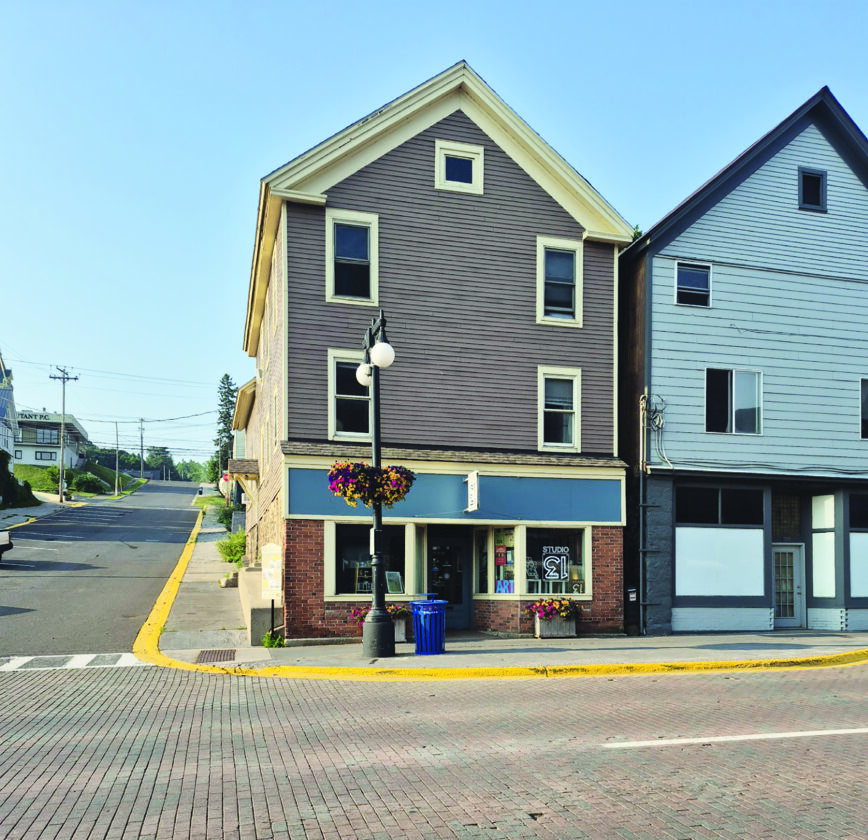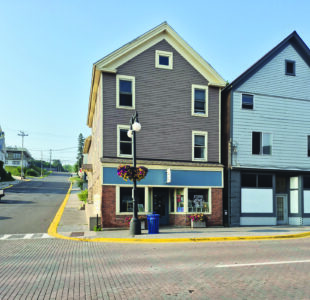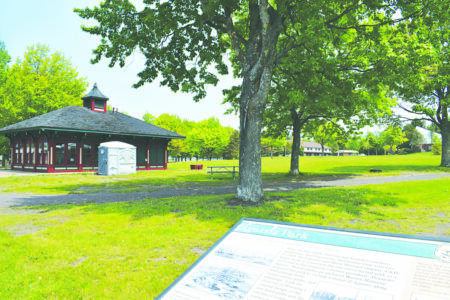Houghton’s forgotten cinema
Remembering the Lyric

Graham Jaehnig/Daily Mining Gazette The building located at 323 Shelden Avenue has stood for over a century, housing several businesses since the turn of the 20th century.
HOUGHTON – Many Copper Country residents recall the Lode Theater, on Shelden Avenue, which closed for business in August, 2010. First opened in 1941 in the former Siller’s Dry Goods Store, the Lode operated successfully for the next 69 years. However, the Lode was not the first movie theater to operate Shelden.
What was located at 236 Shelden Ave. in 1900, was listed as a saloon according to the Keweenaw Time Traveler website’s Sanborn Insurance maps. The Carnegie Museum of the Keweenaw states the building was constructed in 1883.
Sometime during the decade, the street numbers were changed and 236 Shelden became 107. In 1909, the saloon at the corner of Shelden and Dodge streets became a movie house, named The Lyric.
The Lyric Moving Picture Theater opened in July, 1909, according to The Nickelodeon, Volume 2, No.1. The Lyric was the first moving picture theater to advertise in local newspapers, on Nov. 10. On September 21, 1963, the Daily Mining Gazette’s Green Sheet featured an article on John B. Meinardi, who was the second, and final, owner and operator of the Lyric.
The Carnegie Museum of the Keweenaw states the building housed a crockery shop from 1907 to 1910. The Keweenaw Time Traveler clarifies the dilemma of a saloon, a crockery and a movie house operating at the same time. The Sanborn maps for both 1900 and 1914 illustrate the building as having two business under the roof, one in the front, the other in the rear. The saloon and then the movie house were located in the front section.
In the article, Meinardi described the movie house as “a plain movie house of the type which featured the “Perils of Pauline,” serial-type movies which would expose a reel or two this week and additional reels during the following weeks.”
Released in 1914, “The Perils of Pauline” consisted of twenty episodes that used the heroine-in-jeopardy storyline to great success, Pop History Dig says. It is considered by some to be the most famous suspense serial in cinema history.
Between 1908 and 1918, Meinardi ran a successful saloon in Hancock, but Prohibition forced him to choose another line of work, and he purchased the Lyric in 1918.
Saturdays and Sundays were the busiest days, Meinardi told the DMG, with western movies attracting children.
Meinardi was the first theater operator in the Copper Country to abandon the standard carbon light movie projectors to incandescent electric light projectors. His timing was bad, however, and less than a year after he took over the movie house, he had to close it.
According the Michigan Technological University Archives, the Lyric was forced to stop screening films due to the spread of the Spanish Flu pandemic.
Meinardi, says the DMG article, sold the Lyric equipment to a L’Anse man.
While the Lyric disappeared, the building remained. Over the years, it has housed several businesses, including one most residents will still recall operating there from 1969 to 1980, the Cameo Beauty Salon. Later, H&R Block operated at the location briefly. Today, it is an art gallery, Studio 13.




